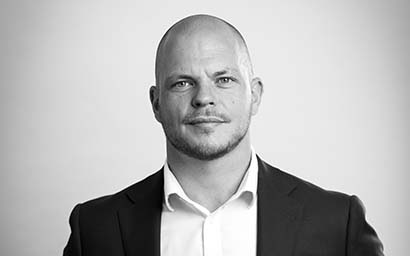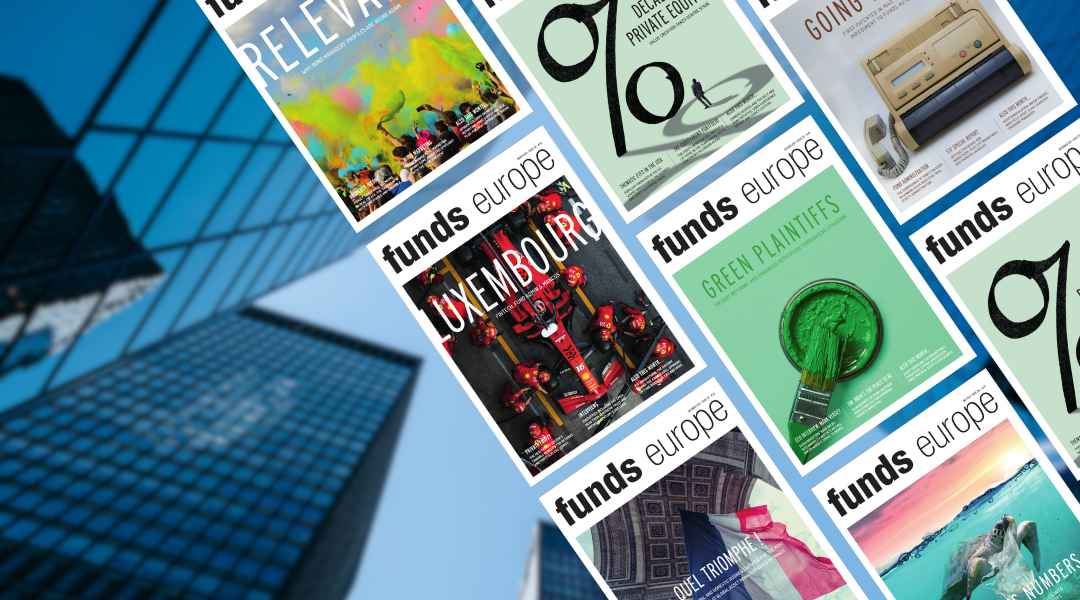 Calastone’s Ross Fox tells Funds Global why the development of digital technology will be so significant for Australia and New Zealand’s funds industry.
As we enter a new decade, the use of digital technology could be the defining development in the funds industry. This is especially true in Australia and New Zealand where there is widespread use of operational outsourcing and a deficiency in automation that could be helped by greater use of digital tools.
Digitalisation has been an integral component across most industries. “At Calastone, we provide a range of digital solutions for fund market participants to deliver greater value to the end investor, while allowing them to innovate and evolve their business models in an ever-changing landscape,” says Ross Fox, managing director and head of Australia and New Zealand.
Advancements in technology mean that funds companies are now able to use tools that were previously inaccessible, says Fox. “They are embracing technology solutions to reshape their businesses for the future. For example, they have been able to lower the cost of day to day activities by streamlining operations teams and processes. This allows firms to refocus resources on more value-added activities while also enabling the launch of new digital products,” says Fox.
This is not to say that adoption of new tools is without its challenges. The very reason that the use of digital technology is so necessary is also the same reason that its implementation has some complexity.
The funds industry operates in numerous and often disconnected silos. This has created a long and complex value chain that contains a host of counterparties and intermediaries, all of which keep their own investment book of record but are dependent on receiving accurate data from the next participant in the processing chain.
“There is a significant frictional cost in the way the funds industry is set up and has always been set up,” says Fox. “Until now, there has never been the technology to change that.”
“Over the last 10 years and more, Calastone has sought to connect the various entities in the funds industry and to bring more automation where there are manual processes, thereby reducing the frictional cost of processing,” says Fox.
The friction has not been removed entirely. Messages need to be configured, screened and exported before they can be delivered onto the next part of the chain. While Calastone may look to remove this burden from their clients, it cannot be eliminated altogether.
Consequently Calastone has spent the last few years investigating the feasibility of a digital network built on distributed ledger technology (DLT) that can strip away that friction entirely and allow market participants to share the same record-keeping data in real-time.
In 2019, it went live with its Distributed Market Infrastructure (DMI), a blockchain-enabled funds platform. “Through the DMI, we connect all fund participants together across the fund chain enabling them to view the real-time flow of fund information while eliminating errors or reconciliation issues,” says Fox.
However, the greatest benefit of the DMI is not simply the extra efficiency it brings to existing processes like fund valuations and order routing but also supporting the new, low-cost investment models.
“The DMI is the platform on which all of our clients in the funds industry operate today, and we are looking at how we can leverage this technology to support future-state, low-cost investment models for funds and beyond,” says Fox.
Tokenisation is one concept that will empower future investment models like micro-investing and fractional shares. These investment models would have the dual benefit of making funds more accessible to a wider range of investors by bringing down the minimum size of investment and also bringing more liquidity and to illiquid assets such as real estate, fine art or infrastructure.
“There are many possible new, low-cost investment models enabled through the DMI,” says Fox.
“Tokenisation is one possible future way of investing that is gaining a lot of traction globally. We are therefore actively investigating the feasibility of tokenisation at the moment with clients and partners.”
To this end, Calastone is working with InterWork Alliance, a cross-industry and platform neutral group that launched in June 2020 and includes the likes of Microsoft, Nasdaq, UBS and the Depository Trust & Clearing Corporation.
The group’s aim to create standards frameworks so that companies can agree on distributed business models without choosing a platform first. At present, the lack of standardisation is the barrier to making tokenisation a reality.
Calastone is already having conversations with clients across Australia and New Zealand on how tokenisation could enable the next paradigm of collective investments.
“A big benefit is the fact that these clients’ expectations of the technology have changed over time,” says Fox.
“When we first launched the DMI, everyone wanted to talk about the transformative potential of blockchain. Now that focus has changed to the practical application of tools to their business. We sat down with our clients about how these new digital tools could work at a nuts and bolts level across all processes. We have been able to develop some regional specific tools that they can use.”
For example, some of these tools are based on the real-time data that is provided by the DMI. Furthermore, the breadth of the Calastone network means that the data can be used as a market indicator. The network currently accounts for 85% of Australia and New Zealand’s funds industry’s wholesale transaction, a figure that could rise to 95% in the near future. Consequently, that data can be used to create liquidity forecasts for individual portfolio managers.
“There are conditions in the funds markets of Australia and New Zealand that lend themselves to digital technology,” says Fox. “It is a significant size market where a lot of operational process is outsourced, so it is a centralised and aggregated market from a trading perspective. This can slow down the processing chain. That is why there is so much interest in digital infrastructure and automated settlement solutions especially.”
Calastone is also currently developing a settlement tool that removes all manual processing and will be available early this year.
“There is currently no automated settlement system in the Australian market because there is no mandated settlement period for redemptions. They are paid at the discretion of the fund manager. Developing a digital infrastructure would change that and create a far more efficient settlement system,” says Fox.
© 2021 funds global asia
Calastone’s Ross Fox tells Funds Global why the development of digital technology will be so significant for Australia and New Zealand’s funds industry.
As we enter a new decade, the use of digital technology could be the defining development in the funds industry. This is especially true in Australia and New Zealand where there is widespread use of operational outsourcing and a deficiency in automation that could be helped by greater use of digital tools.
Digitalisation has been an integral component across most industries. “At Calastone, we provide a range of digital solutions for fund market participants to deliver greater value to the end investor, while allowing them to innovate and evolve their business models in an ever-changing landscape,” says Ross Fox, managing director and head of Australia and New Zealand.
Advancements in technology mean that funds companies are now able to use tools that were previously inaccessible, says Fox. “They are embracing technology solutions to reshape their businesses for the future. For example, they have been able to lower the cost of day to day activities by streamlining operations teams and processes. This allows firms to refocus resources on more value-added activities while also enabling the launch of new digital products,” says Fox.
This is not to say that adoption of new tools is without its challenges. The very reason that the use of digital technology is so necessary is also the same reason that its implementation has some complexity.
The funds industry operates in numerous and often disconnected silos. This has created a long and complex value chain that contains a host of counterparties and intermediaries, all of which keep their own investment book of record but are dependent on receiving accurate data from the next participant in the processing chain.
“There is a significant frictional cost in the way the funds industry is set up and has always been set up,” says Fox. “Until now, there has never been the technology to change that.”
“Over the last 10 years and more, Calastone has sought to connect the various entities in the funds industry and to bring more automation where there are manual processes, thereby reducing the frictional cost of processing,” says Fox.
The friction has not been removed entirely. Messages need to be configured, screened and exported before they can be delivered onto the next part of the chain. While Calastone may look to remove this burden from their clients, it cannot be eliminated altogether.
Consequently Calastone has spent the last few years investigating the feasibility of a digital network built on distributed ledger technology (DLT) that can strip away that friction entirely and allow market participants to share the same record-keeping data in real-time.
In 2019, it went live with its Distributed Market Infrastructure (DMI), a blockchain-enabled funds platform. “Through the DMI, we connect all fund participants together across the fund chain enabling them to view the real-time flow of fund information while eliminating errors or reconciliation issues,” says Fox.
However, the greatest benefit of the DMI is not simply the extra efficiency it brings to existing processes like fund valuations and order routing but also supporting the new, low-cost investment models.
“The DMI is the platform on which all of our clients in the funds industry operate today, and we are looking at how we can leverage this technology to support future-state, low-cost investment models for funds and beyond,” says Fox.
Tokenisation is one concept that will empower future investment models like micro-investing and fractional shares. These investment models would have the dual benefit of making funds more accessible to a wider range of investors by bringing down the minimum size of investment and also bringing more liquidity and to illiquid assets such as real estate, fine art or infrastructure.
“There are many possible new, low-cost investment models enabled through the DMI,” says Fox.
“Tokenisation is one possible future way of investing that is gaining a lot of traction globally. We are therefore actively investigating the feasibility of tokenisation at the moment with clients and partners.”
To this end, Calastone is working with InterWork Alliance, a cross-industry and platform neutral group that launched in June 2020 and includes the likes of Microsoft, Nasdaq, UBS and the Depository Trust & Clearing Corporation.
The group’s aim to create standards frameworks so that companies can agree on distributed business models without choosing a platform first. At present, the lack of standardisation is the barrier to making tokenisation a reality.
Calastone is already having conversations with clients across Australia and New Zealand on how tokenisation could enable the next paradigm of collective investments.
“A big benefit is the fact that these clients’ expectations of the technology have changed over time,” says Fox.
“When we first launched the DMI, everyone wanted to talk about the transformative potential of blockchain. Now that focus has changed to the practical application of tools to their business. We sat down with our clients about how these new digital tools could work at a nuts and bolts level across all processes. We have been able to develop some regional specific tools that they can use.”
For example, some of these tools are based on the real-time data that is provided by the DMI. Furthermore, the breadth of the Calastone network means that the data can be used as a market indicator. The network currently accounts for 85% of Australia and New Zealand’s funds industry’s wholesale transaction, a figure that could rise to 95% in the near future. Consequently, that data can be used to create liquidity forecasts for individual portfolio managers.
“There are conditions in the funds markets of Australia and New Zealand that lend themselves to digital technology,” says Fox. “It is a significant size market where a lot of operational process is outsourced, so it is a centralised and aggregated market from a trading perspective. This can slow down the processing chain. That is why there is so much interest in digital infrastructure and automated settlement solutions especially.”
Calastone is also currently developing a settlement tool that removes all manual processing and will be available early this year.
“There is currently no automated settlement system in the Australian market because there is no mandated settlement period for redemptions. They are paid at the discretion of the fund manager. Developing a digital infrastructure would change that and create a far more efficient settlement system,” says Fox.
© 2021 funds global asia  At times like these, HSBC Asset Management easily pivots towards emerging markets.
At times like these, HSBC Asset Management easily pivots towards emerging markets.
The spotlight on growth markets and the need to be nimble and dynamic is ever-sharper, given the difficulty in predicting monetary policy in the world’s major nations.

 A comprehensive, cost-effective, and transparent currency overlay hedging solution is crucial to mitigate FX exposure risks in the complex landscapes of Japan and China's FX markets, explains Hans Jacob Feder, PhD, global head of FX services at MUFG Investor Services.
A comprehensive, cost-effective, and transparent currency overlay hedging solution is crucial to mitigate FX exposure risks in the complex landscapes of Japan and China's FX markets, explains Hans Jacob Feder, PhD, global head of FX services at MUFG Investor Services. The world is transitioning from an era of commodity abundance to one of undersupply. Ben Ross and Tyler Rosenlicht of Cohen & Steers believe this shift may result in significant returns for commodities and resource producers over the next decade.
The world is transitioning from an era of commodity abundance to one of undersupply. Ben Ross and Tyler Rosenlicht of Cohen & Steers believe this shift may result in significant returns for commodities and resource producers over the next decade. Ross Dilkes, fixed income portfolio manager at Wellington Management, examines the opportunities and risks for bond investors presented by the region’s decarbonisation agenda.
Ross Dilkes, fixed income portfolio manager at Wellington Management, examines the opportunities and risks for bond investors presented by the region’s decarbonisation agenda. Shareholders in Japan no longer accept below-par corporate governance standards. Changes are taking place, but there are still areas for improvement, says Tetsuro Takase at SuMi Trust.
Shareholders in Japan no longer accept below-par corporate governance standards. Changes are taking place, but there are still areas for improvement, says Tetsuro Takase at SuMi Trust. Robert St Clair, head of investment strategy at Fullerton Fund Management, explores the reasons investors should be paying attention to the rising demand for healthcare in China.
Robert St Clair, head of investment strategy at Fullerton Fund Management, explores the reasons investors should be paying attention to the rising demand for healthcare in China.


